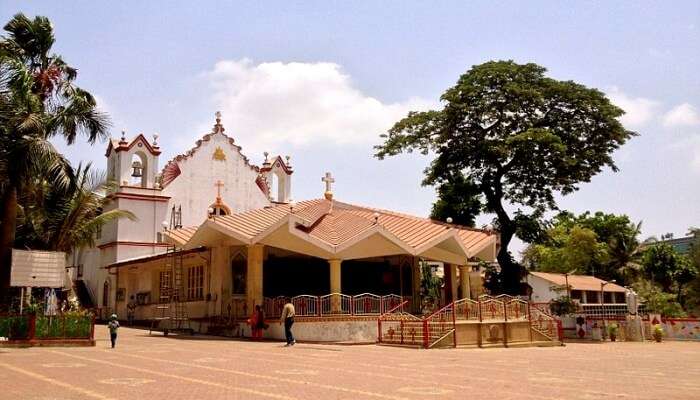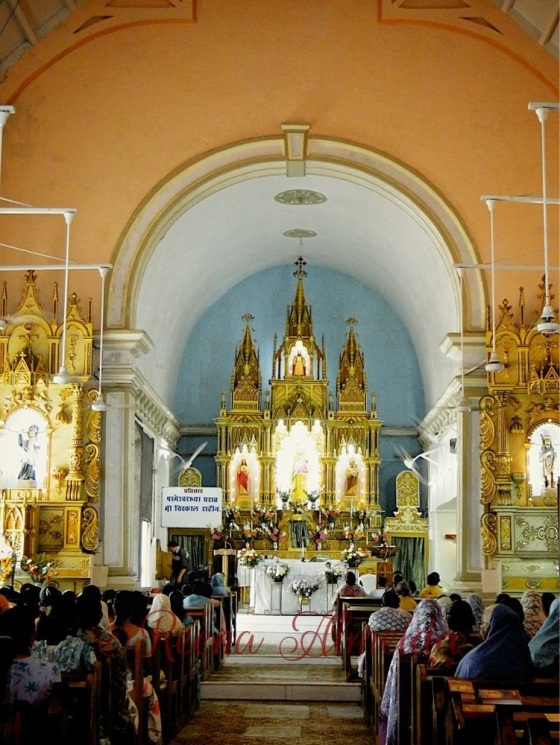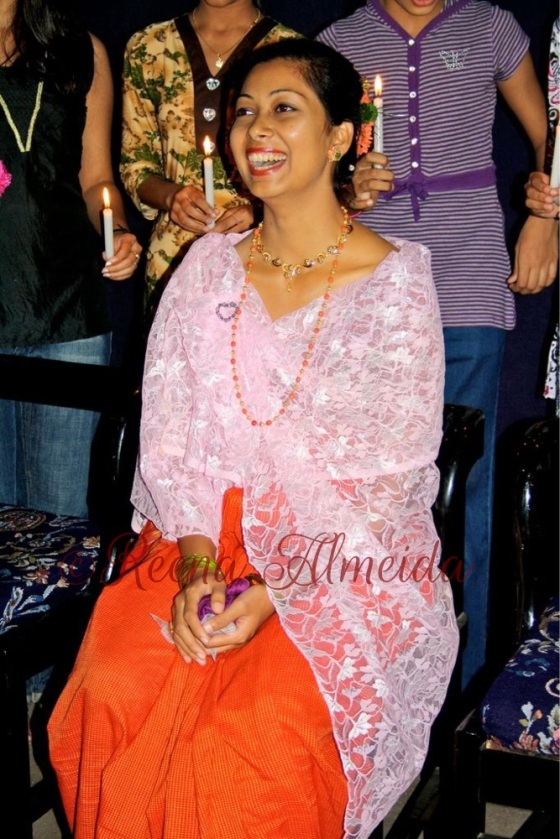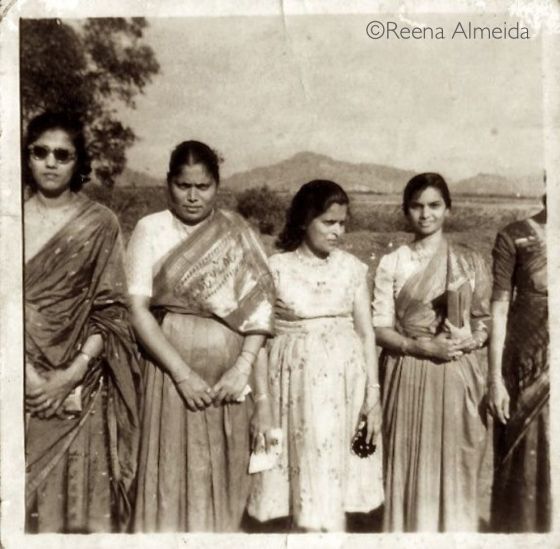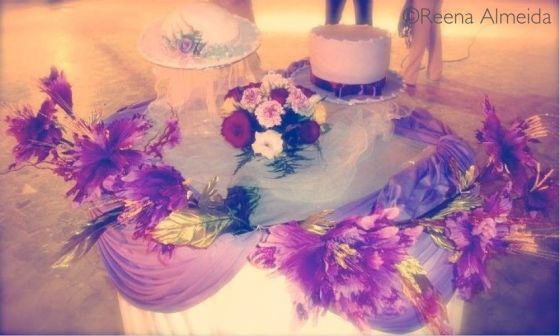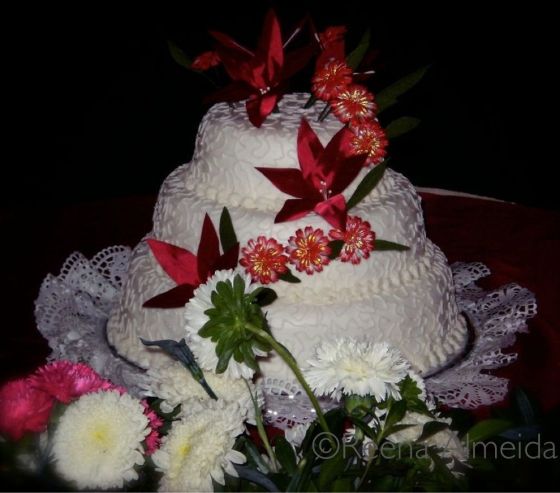Oldest churches take pride in history at Christmastime
.........

Bombay East Indian Books

A long time ago, I had written about two books very pertinent to the East Indian community of Mumbai – Trace and the Salsette Vasai East Indian Cook Book I. Due to public demand, these books ran out of print very quickly.
This year, September saw the republication of the second part to the Late Dorothy Rodrigues’ cook book as well as Trace by the Late Teddie Rodrigues. More information on purchasing both these books can be found on the website I created under the moniker Bombay East Indian Books with help from Teddie and Dorothy’s daughter, Cassia who is married to my cousin brother.
Do visit the website to know more about this remarkable East Indian couple from Vile Parle and their contribution to documenting the East Indian way of life and cuisine.
Who are these East Indians you speak of?
3
General confusion over our origins is something every East Indian is intimately familiar with.
For a community with roots planted firmly in Bombay, it is difficult explaining people that we are not – as the name points out – from the East of India. We are not (well, most of us at least aren’t) descendants of the employees of the East India Company – British or otherwise.
The East Indians of Mumbai are essentially the native residents of Bombay (of course, it wasn’t known as Bombay back then) converted to Christianity many years ago – back when St. Bartholomew himself visited the Western coast of India (2nd Century AD).
It is to the Portuguese however, who came much later, that we owe much of our traditions, architectural styles, cuisine and various dialects. It was the Portuguese after all, who gathered the Christians already thriving in the area and were responsible for ensuring the continued existence of parishes and churches.
Had the British not been such a dominating influence on Indian politics and society, the East Indians would have probably continued using the moniker Portuguese Christians.
Over the years, the East Indians have kept alive the traditions that were carried out before Roman Catholicism and Latin took over our religion and language. Coastal Konkan foods like sanna (soft rice flatbread), bombil (Bombay Duck) fry and rural Maharashtrian foods like dried mango fish curry and cucumber cake, to name a few, find their way on to our tables.
The caste system exists in our community and while it no longer holds as much power over modern East Indian society, it does help differentiate the various dialects, cultural traditions, customs and even the kind of masalas and pickles we make!
Marathi however, is considered the mother tongue of our people and for written communication we use the Shudh (pure) Marathi prevalent in the state of Maharashtra. The dialects however, differ from region-to-region and caste-to-caste.
For instance, in Vasai (Bassein) alone, there are the Valkar, Vaadval, Kaado, Koli, Paanmaali, Maankar, etc. – each with their own dialect and with subtle but definite differences in wedding customs, cuisine and jewellery among other things.
I shall use my own people (Valkar) and my husband’s (Vaadval) as an illustration of this difference.
Differences of dialect:
English – Where have you been?
Valkar – Kaila gelti/gelta?
Vaadval – Katey geli/gela?
{The East Indian Kolis, to mention another group, have a more lilting way of speaking and the sibilant sounds are more stressed.}
Jewellery:
The Valkar gold jewellery is more reminiscent of delicate floral and geometric patterns, while Vaadval gold jewellery is chunkier and heavier in design and pattern.
It is taboo these days to get into details about the caste divisions, and rightly so. But just to illustrate a point, back in the days of the British, the Valkars tended to pursue clerical/office jobs while the Vaadvals were landowners and farmers – these occupational details further shaping the dialects and certain customs.
Our homes were all built the same way though – cow dung-floors, tiled roofs, wooden beams supporting the roof, a proper hearth in the kitchen, a verandah with enough space for a wooden swing and a pit or two in the floor to pound spices. These homes are rare now and are uninhabitable, except for ones in the deepest gaothans (villages).
Today, the East Indians are just one of the many minorities living in their home state and largely forgotten by the rest of Mumbai.

But we are present in Vasai, Uttan, Gorai, Mazagaon, Mahim, Vakola, Kalina, Marol, Chakala, Bandra, Parel, Parla, in every ‘Galyan saakli sonyaachi‘
sung, in the beats of the ghumat at weddings, in piping hot, soft
foogyas, in spicy pork indyaal (vindaloo) made using the East Indian
Indyaal Masala, in the famous Bottle Masala,
in the weave of vivid, bright lugdas and in a lot of Fernandes’,
Pereiras, Mirandas, Almeidas, Sequeiras, Rebellos, Lopes’, Furtados,
D’mellos, Gonsalves’ and D’souzas.
These last names may be shared by a lot of Goans and Mangaloreans as well, but look closer and you just may be able to tell an East Indian from the other Christian Indian ethnicities.
Note: While I am no scholar on East Indian lore, I have tried my best to present a legitimate summary of my community from everything I’ve learned growing up as a girl in Vasai. If there are any points you feel must be included or corrected, I invite you to email me at almeidareena at gmail dot com. I would appreciate your inputs towards presenting a more accurate picture of the East Indian community of Bombay.
For a community with roots planted firmly in Bombay, it is difficult explaining people that we are not – as the name points out – from the East of India. We are not (well, most of us at least aren’t) descendants of the employees of the East India Company – British or otherwise.
The East Indians of Mumbai are essentially the native residents of Bombay (of course, it wasn’t known as Bombay back then) converted to Christianity many years ago – back when St. Bartholomew himself visited the Western coast of India (2nd Century AD).
It is to the Portuguese however, who came much later, that we owe much of our traditions, architectural styles, cuisine and various dialects. It was the Portuguese after all, who gathered the Christians already thriving in the area and were responsible for ensuring the continued existence of parishes and churches.
Had the British not been such a dominating influence on Indian politics and society, the East Indians would have probably continued using the moniker Portuguese Christians.
Over the years, the East Indians have kept alive the traditions that were carried out before Roman Catholicism and Latin took over our religion and language. Coastal Konkan foods like sanna (soft rice flatbread), bombil (Bombay Duck) fry and rural Maharashtrian foods like dried mango fish curry and cucumber cake, to name a few, find their way on to our tables.
The caste system exists in our community and while it no longer holds as much power over modern East Indian society, it does help differentiate the various dialects, cultural traditions, customs and even the kind of masalas and pickles we make!
Marathi however, is considered the mother tongue of our people and for written communication we use the Shudh (pure) Marathi prevalent in the state of Maharashtra. The dialects however, differ from region-to-region and caste-to-caste.
For instance, in Vasai (Bassein) alone, there are the Valkar, Vaadval, Kaado, Koli, Paanmaali, Maankar, etc. – each with their own dialect and with subtle but definite differences in wedding customs, cuisine and jewellery among other things.
I shall use my own people (Valkar) and my husband’s (Vaadval) as an illustration of this difference.
Differences of dialect:
English – Where have you been?
Valkar – Kaila gelti/gelta?
Vaadval – Katey geli/gela?
{The East Indian Kolis, to mention another group, have a more lilting way of speaking and the sibilant sounds are more stressed.}
Jewellery:
The Valkar gold jewellery is more reminiscent of delicate floral and geometric patterns, while Vaadval gold jewellery is chunkier and heavier in design and pattern.
It is taboo these days to get into details about the caste divisions, and rightly so. But just to illustrate a point, back in the days of the British, the Valkars tended to pursue clerical/office jobs while the Vaadvals were landowners and farmers – these occupational details further shaping the dialects and certain customs.
Our homes were all built the same way though – cow dung-floors, tiled roofs, wooden beams supporting the roof, a proper hearth in the kitchen, a verandah with enough space for a wooden swing and a pit or two in the floor to pound spices. These homes are rare now and are uninhabitable, except for ones in the deepest gaothans (villages).
Today, the East Indians are just one of the many minorities living in their home state and largely forgotten by the rest of Mumbai.

The traditional morlis are still in use for slicing onion, grating coconuts and cleaning fish among other things.
These last names may be shared by a lot of Goans and Mangaloreans as well, but look closer and you just may be able to tell an East Indian from the other Christian Indian ethnicities.
Note: While I am no scholar on East Indian lore, I have tried my best to present a legitimate summary of my community from everything I’ve learned growing up as a girl in Vasai. If there are any points you feel must be included or corrected, I invite you to email me at almeidareena at gmail dot com. I would appreciate your inputs towards presenting a more accurate picture of the East Indian community of Bombay.
EI Alert: East Indian Exhibition
Terencia Kinny, a student of architecture has been working for a
while now on her Design and Research thesis on East Indians. An East
Indian herself, she contacted me a couple of months back inquiring about
Teddy Rodrigues book on East Indian history and culture – Trace.
The reason she was seeking the book caught my attention and I couldn’t be happier to speak about it here.
Mark out Saturday, 16 April 2011 as a day to soak in some of the best East Indian culture has to offer. The Mobai Gaothan Panchayat (MGP) is organising the East Indian Exhibition – the first of its kind to be held in Mumbai – with the theme, ‘Amhi Mobaikar‘.
The exhibition commemorates a community regarded as one of the original occupants of the city and promises artifacts, photographs, articles, cuisine and information on the rich culture and tradition of the East Indian people.
A must-visit event for East Indians in the city curious about their roots and traditions, I strongly recommend other communities have a look-see about a culture steeped in Old Bombay and the group of islands once known as just Salsette-Bassein.
Don’t forget to bring your cameras and questions!
The reason she was seeking the book caught my attention and I couldn’t be happier to speak about it here.
Mark out Saturday, 16 April 2011 as a day to soak in some of the best East Indian culture has to offer. The Mobai Gaothan Panchayat (MGP) is organising the East Indian Exhibition – the first of its kind to be held in Mumbai – with the theme, ‘Amhi Mobaikar‘.
The exhibition commemorates a community regarded as one of the original occupants of the city and promises artifacts, photographs, articles, cuisine and information on the rich culture and tradition of the East Indian people.
A must-visit event for East Indians in the city curious about their roots and traditions, I strongly recommend other communities have a look-see about a culture steeped in Old Bombay and the group of islands once known as just Salsette-Bassein.
Don’t forget to bring your cameras and questions!
Event
East Indian Exhibition
East Indian Exhibition
Date
Saturday, 16th April 2011
Saturday, 16th April 2011
Time
2:00pm to 8:00pm
2:00pm to 8:00pm
Venue
Veneration Hall, Opposite Irla Church
Veneration Hall, Opposite Irla Church
Organisers
Mobai Gaothan Panchayat
Mobai Gaothan Panchayat
For more information, contact
Alphi D’souza, CEO and Spokesperson for MGP +91-982-008-7771
Alphi D’souza, CEO and Spokesperson for MGP +91-982-008-7771
Prem Moraes, MGP Exhibition Spokesperson +91-986-736-8669
Terencia Kinny +91-992-099-7944
* The exhibition aims at creating awarenesss about East Indian culture and traditions *
* Various artefacts used by East Indians will be on display *
* Pictures will be used with descriptions on their specialty *
* Families
who donate East Indian artefacts will have their family name tagged on
them. These articles will then be permanently displayed at the special East Indian Exhibition space at Mobai Bhavan, Manori *
A Handy Little Wedding Cake Guide
When you book a venue for your wedding in Bombay, it tends to be
a parcel of most essential wedding requirements – the decorator,
caterer, sound and light, wedding car, etc. As well as for the
economically worried, this service by the venue providers is excellent
for those who don’t want to spend much time fretting over the
nitty-gritty. There are of course options for different budgets –
usually ranging from platinum to silver packages.
The caterers who are included in this contract system also provide the bridal couple with the wedding cake, and it is usually complimentary. The cake you end up with is in direct relation to the catering package you select. If you aren’t pleased with what you see, you can always opt to buy (or make) your own wedding cake.
Sample these cakes – most of them taken from the wedding albums of East Indian couples I know.
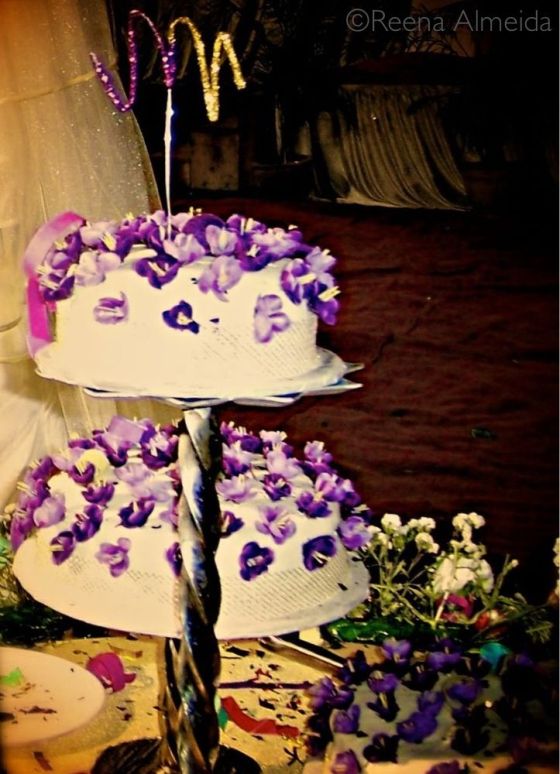

The caterers who are included in this contract system also provide the bridal couple with the wedding cake, and it is usually complimentary. The cake you end up with is in direct relation to the catering package you select. If you aren’t pleased with what you see, you can always opt to buy (or make) your own wedding cake.
Sample these cakes – most of them taken from the wedding albums of East Indian couples I know.

Concept - mine (flowers from Crawford Market & topper by Shawn Lewis), Cake artist - Aunty Glenny, Vasai

Aren’t they beautiful! Do send me pictures of your wedding cakes, I would love to put them up out here.
One of the limitations most cake bakers I
know face when crafting a wedding cake in Bombay is the lack of decent
food colouring. You get the standard red, blue, green and yellow and any
daring colours can only be attempted via the mix-and-match method. Even
then, the colour you end up with is a watered down shade of the one you
need.
For instance, for my own wedding cake, I had
an entirely different style of cake in mind and plum purple was my
choice of colour for the layer of icing as it would have totally swinged
our theme. I had to reverse the combination though and make do with
(artificial) plum purple flowers that I plucked out of a bouquet I
purchased at Crawford Market. Regardless, I was told people had a good
time sticking them all in the cake while decorating it, so it turned out
fun in the end *grin*
For my sister’s wedding we are better
prepared and I am going to do my darndest to arm Aunty Glenny with bold
food colouring like the ones I saw on Baking Pleasures.
If you would like to go the cupcake way
(like the second cake from Project Wedding), there are many cupcake
bakers cropping up in good old Bombay these days. A very hunger-inducing
glance through some Brown Paper Bag archives led me to these lovely folks:
~ SOS Cupcakes – for whimsy cupcakes~ Dolce – for Luxe cupcakes~ Recipe Mobile – for cupcakes and cheesecakes~ Cake it Away – for creative cupcakes
And then again, there are professional bakers who specialize in wedding cakes like:
~ Joyce Fernandes – +912226423613 / +912226436805 / +919820139370~ Desireé Cake Studio – +912226454962 / +912226458998~ Tart Cakes – they are not as dodgy as they sound (not unless you want them to) and they even make cupcakes
And if you happen to be a groom or bride who
wants to go that extra mile for the aisle, try out something as novel
as a cake baking class that allows you to take home the fruit of your
labour. Reema Prasanna’s Bake You!
not only provides you with an expert one-on-one baking session, but you
also get to use her kitchen and equipment. For a couple that would like
to make their wedding extra memorable (and have some time on their
hands), I can’t think of a better way to do so than indulge in an
activity like this!
So there you have it, my handy little guide
to the best websites, spots and people to hit for a wedding cake in
Mumbai and even in Vasai. Let me know if you know of any interesting
ones. You could shoot me a mail at haellii at hotmail.co.uk or simply
comment on this post.
 was recently restored to its former
glory. Parish priest Allwyn D'Silva recalls the grand opening ceremony
where clergy and laity participated in large numbers.
was recently restored to its former
glory. Parish priest Allwyn D'Silva recalls the grand opening ceremony
where clergy and laity participated in large numbers.![Bombay Photo Images[ Mumbai]: DADAR- PORTUGUESE CHURCH THEN AND NOW -BEFORE ENGLISH STARTED CALLING THE PLACE DADAR(STEPS) IT WAS KNOWN AS 'SALVESONG' BECAUSE OF THE CHURCH OF NOSSA SENORA DA SALVECAO](https://lh4.ggpht.com/_kpWpvtDX5bY/ShFqdycj0ZI/AAAAAAAAAIk/uepF2oQiAHs/w1200-h630-p-k-rw-no-nu/vintage%20mumbai%2036%20%28portugese%20church%20dadar%29.jpg)
 The present church is ultra-modern compared to the old Portuguese one.
The present church is ultra-modern compared to the old Portuguese one.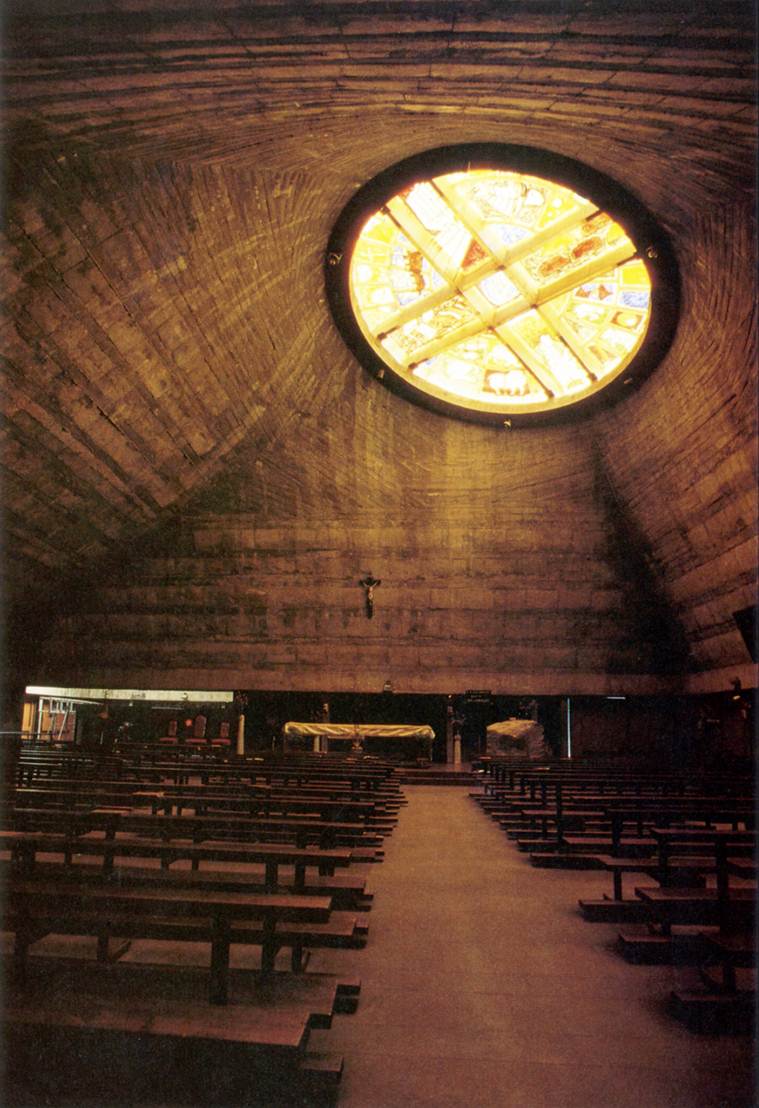 God’s grace: The fresco on glass painted by MF Husain.
God’s grace: The fresco on glass painted by MF Husain.







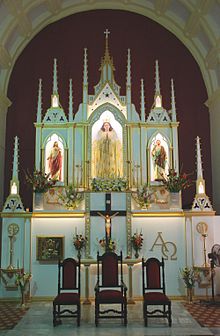


 BOAT BUILDING
BOAT BUILDING 

